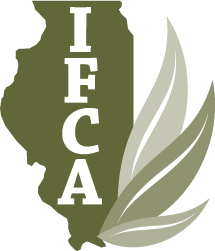Frozen, Snow Covered Soils & the 4Rs
With snow blanketing much of Illinois, temperatures at freezing and winter officially beginning this Saturday, it is becoming more problematic to spread nutrients with the assurance that it is the "right time" to do so.
In the past decade, a constantly monitored river in east-central Illinois has revealed spikes in dissolved reactive phosphorus following snow-melt or major rain events on frozen soil. The most recent of these events occurred last year in early March. To see the slide of phosphorus spikes in the river monitoring chart, including the spike on March 10 last year, click here.
The University of Illinois has published a new Bulletin discussing the problems with winter spreading. At last week's Illinois 4R program, we also outlined the goals of the Illinois Nutrient Loss Reduction Strategy, and while point sources (wastewater treatment plants) have made considerable progress removing phosphorus from the wastewater they discharge into the Illinois river systems, agriculture has a long way to go. We are making progress, but we need to show more success to meet the 2025 goal of reducing total P losses by 25% throughout Illinois.
Keeping P application to fall and spring when soils are not frozen or snow covered is one way to get there. Winter spreading is also a very visible activity and we continue to work very hard to avoid legislation and litigation on nutrient use. Recently, there was a new lawsuit filed in Missouri claiming their state regulatory agencies aren't doing enough to reduce nutrient losses and that regulations should be considered. We know what a challenge the fertilizer application season has been, but keeping nutrients for the crop is the best thing for your customers, for the crop and for the environment. Please follow the 4Rs and stay off of frozen, snow covered soils. Thanks everyone for your cooperation!
